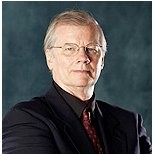
J Casey
- Courses2
- Reviews2
- School: University of Houston
- Campus:
- Department: Geology
- Email address: Join to see
- Phone: Join to see
-
Location:
4800 Calhoun Rd
Houston, TX - 77004 - Dates at University of Houston: October 2005 - August 2010
- Office Hours: Join to see
It's my life
Would take again: No
For Credit: No
0
2
Awesome
no comment
Biography
University of Houston - Geology
Resume
1987
University of Houston
same as above
University of Houston
1980
University of Houston
same as above
University of Houston
University of Houston
Houston
Texas
I am currently a professor of geology in the Department of Earth and Atmospheric Sciences at the University of Houston. I served as Chairman from 1999-2013 and have since concentrated on research developing my ICP Lab with LA-ICP-MS
QQQ-ICP-MS
and ICP-OES and developing and using major
trace
and ultra trace element and isotopic analytical methods for analysis of igneous
metamorphic and sedimentary rocks
minerals
glasses
natural waters
organic matter
and crude oil. I conduct field work in Newfoundland in the Bay of Islands region
at mid-ocean ridges
in Texas at Big Bend National Park and in the Eagle Ford Shales
as well other regions of the world including the China
Turkey
the Caribbean
etc.
Professor of Geology
Houston Texas
I am a Professor of Geology
Director of the ICP-MS Lab and Co-Director of the Agillent Center of Excellence in Geochemistry at the University of Houston. I teach Field Methods
Structural Geology
Plate Tectonics
and Igneous Petrogenesis and Plate Tectonics. I supervise graduate students conducting research on Mid-Ocean Ridges
Ophiolite Belts
Geochemistry
Geochronology of Siliciclastic and Igneous Rocks
Structural Geology and Plate Tectonics.
Chairman of the Department of Earth and Atmospheric Sciences
University of Houston
1975
Ph.D.
Geology
American Geophysical Union\nGeological Society of America
1970
Geology
Stratigraphy
Structural Geology and Tectonics
Characterization
Earth Science
Science
Geology
Sedimentology
Geophysics
Sequence Stratigraphy
Seismology
Mineral Exploration
Geochronology
Reservoir Management
Petrel
Structural Geology
Tectonics
Geological Mapping
Geochemistry
Petroleum Geology
Petrophysics
Davidson
M.
Casey
J.
Lapen
T.
2013. Regional Variation in the Timing of Cessation of Laramide Folding
Uplift
and Post Flat-Slab Ignimbrite Flare Ups in West Texas (Abstract ID: 1817922).
Tertiary volcanism in the Trans-Pecos region of West Texas is thought to be related to: 1) a major Farallon buoyant object-related slab flattening period resulting in early arc volcanic activity progressively shifting eastward to New Mexico and West Texas
2) a subsequent slab-steepening/roll back or slab break away period resulting in renewed and extensive volcanism and ignimbrite flare ups across the region
and 3) final minor volcanism related to Basin and Range extension. Evidence for these tectonic induced volcanic periods can be observed in volcanic compositional variation and the timing and style of volcanism and deformation. This includes highly varied pre-folding mafic alkaline and calc-alkaline volcanic and intrusive rocks from ~46Ma (Eocene) to ~32Ma (Oligocene). This is followed by broadly distributed
post-folding calc-alkaline volcanism with subsidiary alkaline mafic volcanism during subsequent regionally varying slab steepening or break away periods (38Ma to 28Ma). Later
smaller-scale
almost exclusively mafic volcanism is associated with Basin and Range extension that occurred between 25 to 2Ma (Barker
1987). \nThis study attempts to refine regional differences in the cessation of Laramide folding and episodic slab-asthenosphere influenced volcanism in West Texas by utilizing LA-ICP-MS U/Pb zircon geochronology. Ages have been measured for volcanic rock samples that occur both above and below the angular unconformity. In addition
ages for detrital zircons have been obtained in silicilastics below the unconformity. Based on our preliminary results
we suggest cessation of shortening associated with Laramide-style deformation and uplift in the northern Trans-Pecos region ceased by ~38 Ma (Eocene) and persisted in the south e.g.
in the Big Bend region until ~31 Ma (Oligocene). These differences may be explained by fundamental changes in the North American plate basal lithospheric structure from north to south in the region.
John F.
University of Houston
Possible Matching Profiles
The following profiles may or may not be the same professor:
- J Casey
Shasta College - Languages
Possible Matching Profiles
The following profiles may or may not be the same professor:
- Arthur J Casey (30% Match)
Lecturer
California State University - California State University - Geraldine J Casey (50% Match)
Lecturer
Indiana University - Indiana University - Michael J Casey (30% Match)
Associate Professor
University Of Florida - University Of Florida - Michael J Casey (30% Match)
Associate Professor
University Of Florida - University Of Florida - Rebecca J Casey (30% Match)
Instructor
Pittsburg State University - Pittsburg State University - Stephanie J Casey (30% Match)
Office Associate
Eastern Kentucky University - Public Universities - John J Casey (30% Match)
Instructor
University Of Nevada, Las Vegas - University Of Nevada, Las Vegas
